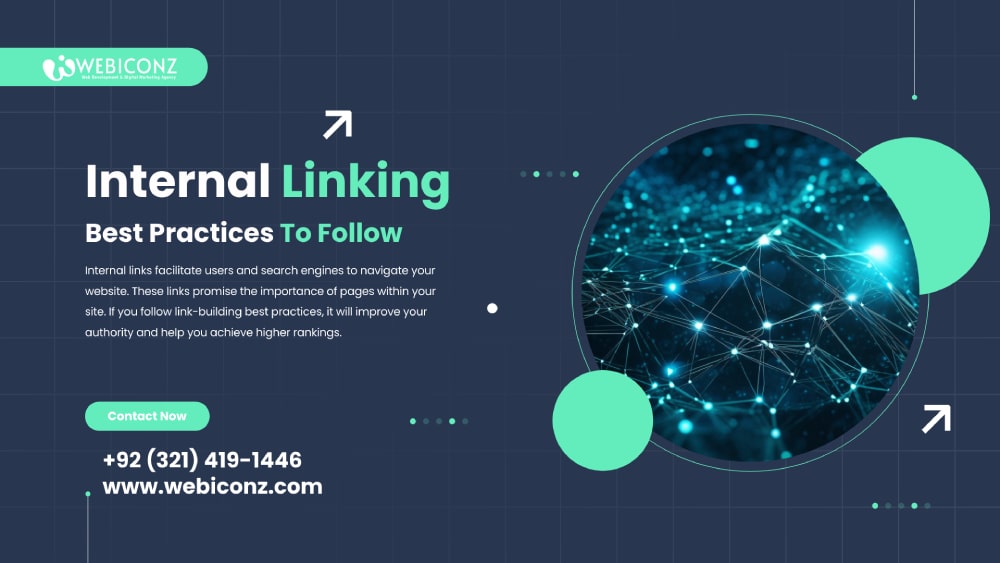Internal Linking | Best Practices to Follow in 2024

Internal links facilitate users and search engines to navigate your website. These links promise the importance of pages within your site. If you follow link-building best practices, it will improve your authority and help you achieve higher rankings. Pages with high-quality and engaging content linked to relevant internal pages will prompt search engine optimization to index and rank your new pages faster.
Building contextual internal backlinks using the right anchor can drive visitors to relevant pages. Additionally, placing internal links high up on your page can help you get users hooked up to the topic so that they spend more time on your website. Internal links factor to any other website or resource, which includes an image, video, or record at the equal internet site or domain.
Best Internal Linking Practices
Internal linking strategies help users navigate a website easily and redirect them to relevant web pages. When users find the related content in these links, they tend to stay longer on your website, which increases your page views. Moreover, new users can discover topics of interest with sitewide internal linking.
Internal links reduce your site’s bounce rate because visitors leave the site midway without reading through the entire written piece when visitors need help finding engaging content. This can be reduced by optimizing your content with relevant internal links.
Create Content
You must create many internal pages and write quality content to create internal links throughout your site. A lot of content gives you sufficient inner linking possibilities to utilize. Also, you do not need to fear approximately complicated content material layers to construct a very good inner linking shape on the website.
Link High Authority Pages for Improved Rankings
The Authority Transfer technique effectively distributes link authority to a website’s most critical SEO-driven pages. There are effective tools that can help you find such pages and add internal links.
Put Links High Up: High-up internal links increase the time spent on the web page and reduce the bounce rate.
Descriptive Anchor Text: The anchor textual content of a hyperlink is clickable and used to link to another page. The descriptive anchor accurately reflecting the linked page’s content is crucial for effective internal linking. This helps visitors and search engines understand what the linked page is about.
Relevancy to Content: Create internal links relevant to the content on the current page. Linking to irrelevant pages must be clarified for users and can disturb the overall user experience.
Natural Link Flow: Internal links are placed naturally within the content of a webpage. These links are not forced and are placed in a way that makes sense to the reader and adds value to the content.
Number of Links: Use reasonable internal links on each page to avoid confusing users. If you use fewer links, then it will harm SEO efforts. Limit the number of internal links to 3-5 per page.
Updated Links: Keep your internal links updated for a user-friendly website because outdated links can harm the user experience and SEO rankings.
Monitor Internal Links: It is important to monitor internal links on a website frequently. This can identify any broken links or links that are no longer relevant.
What is the Importance of Internal Linking?
- Improved user experience, reduced bounce rate, and enhanced SEO.
- Additional context and resources
- Increased visitor accessibility, engagement, and website effectiveness
- Clear information architecture
- Link to authoritative external sources
- Enhanced website accessibility
What Should You Avoid in SEO Internal Linking?
Non-Descriptive Anchor Text: Non-descriptive anchor text is confusing for users and search engines, so you must have accurate anchor text that describes the linked page’s content.
Too Many Links: A large number of internal links on a web page can dilute the cost of the links. To avoid this, use a reasonable number of links on each page.
Low-Quality Pages: Linking to low-quality pages negatively impacts SEO. Link pages that provide context and value to the current page.
Over-Optimizing: Over-optimizing internal links can badly impact the overall SEO of the website.
Internal Linking and SEO
Internal linking facilitates the distribution of hyperlink fairness throughout the website, improving the authority and relevance of linked pages. Therefore, it is necessary to use internal linking smartly and naturally.

